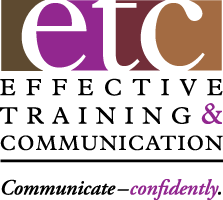This article is first in a series on audience-centric presentations.
How do you get to the Presenters’ Hall of Fame? Before you all chime in with ‘Practice, man, practice’, consider this – practice doesn’t make perfect, it only makes permanent. Only perfect practice makes perfect.
So, Best-in-Class Presenters got in the Hall of Fame by perfect practice. They also got in there by harnessing the power of audience-centricity, the art and science of crafting and delivering audience-centered messages. What follows is a brief summary of Best Practices learned from those presentation pros.
If you’ve ever suffered through a ‘Presentation from Hell’, it was probably delivered by someone with a presenter-centered mindset. The unspoken message is usually – ‘I know this stuff and you don’t. So, I’m going to tell you everything I know about the topic in the way I want to tell you for as long as I want to talk.’ Not exactly audience-friendly, is it? This presenter is also guilty of taking the ‘Golden Rule’ to a ridiculous extreme by presenting to others the way he or she would like others to present to him or her.
The audience-centered alternative is easy to describe, but much harder to do. Here, the unspoken message is usually – ‘It’s my role and my pleasure to share important information of value for you. But, I’ll only tell you what you need and want to know in the way you want to hear it only for as long as you need.’ This presenter realizes the intrinsic value of practicing the ‘Platinum Rule’, as first defined by Dr. Tony Alessandra. That means presenting to others the way they want to be presented to.
To approach audience-centricity, presenters need clearly defined objectives and outcomes for the message that are described in audience-centric terms. They also need to take the time to assess what the audience needs to know to accomplish those objectives. Then, they must craft the message with that specific end in mind.
Often, presenter ego can get in the way. It’s difficult for subject matter experts to realize and accept that the presentation isn’t all about them. It’s all about those outcomes and the audience’s needs relative to accomplishing them. Again, easy to say but hard to do.
In future articles, I’ll focus on each of the components making up Best-in-Class audience-centered presentations, from defining objectives to audience analysis to the role of visual aids to even the strategies for handling audience questions.
So, how do you get into the Presenter Hall of Fame? By harnessing the power of audience-centricity. By becoming more of a ‘Platinum Rule’ presenter. By taking the extra time to do it right the first time. Like I said, easy to say, but hard to do. Best wishes for success on your journey towards the Hall of Fame.
